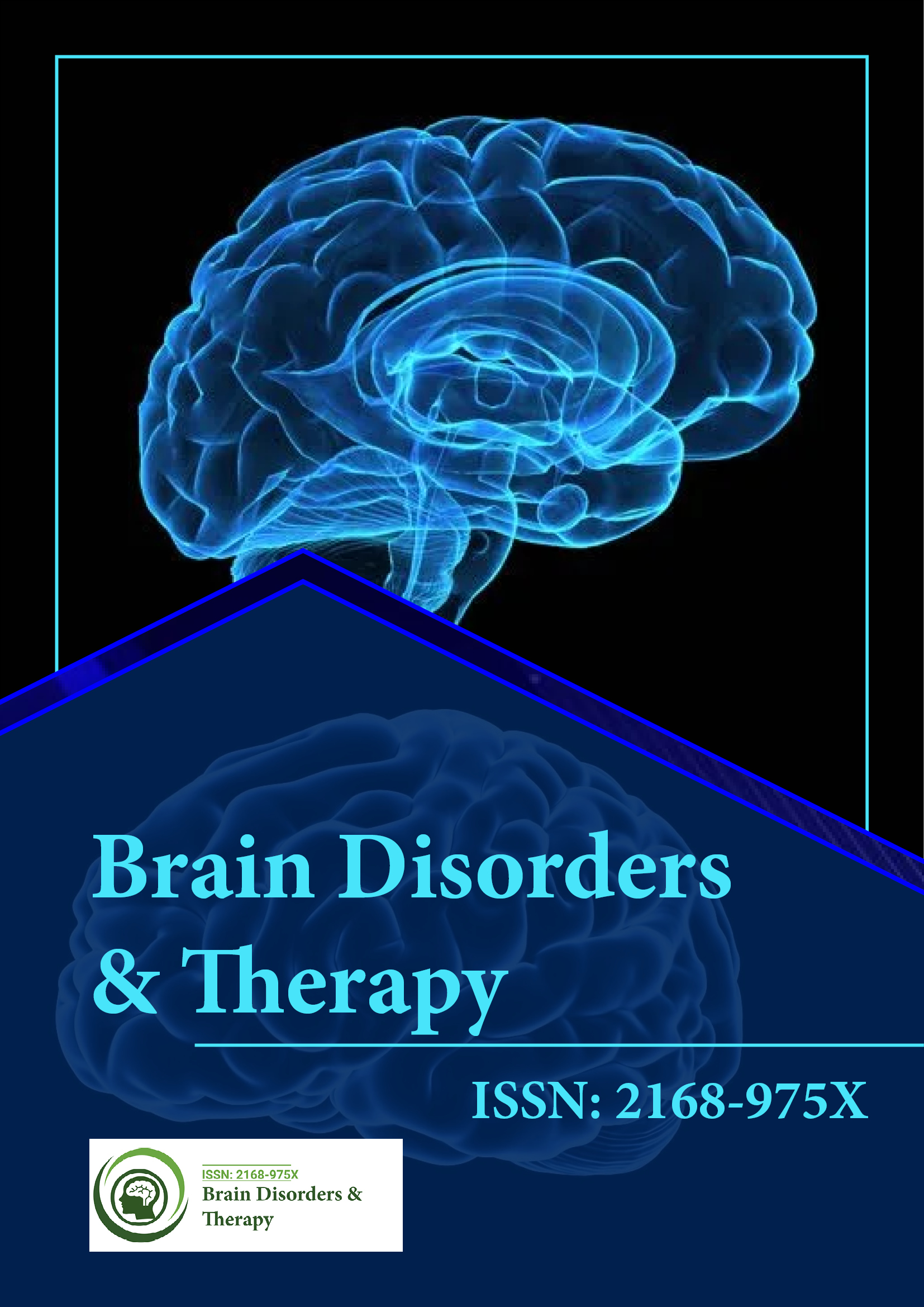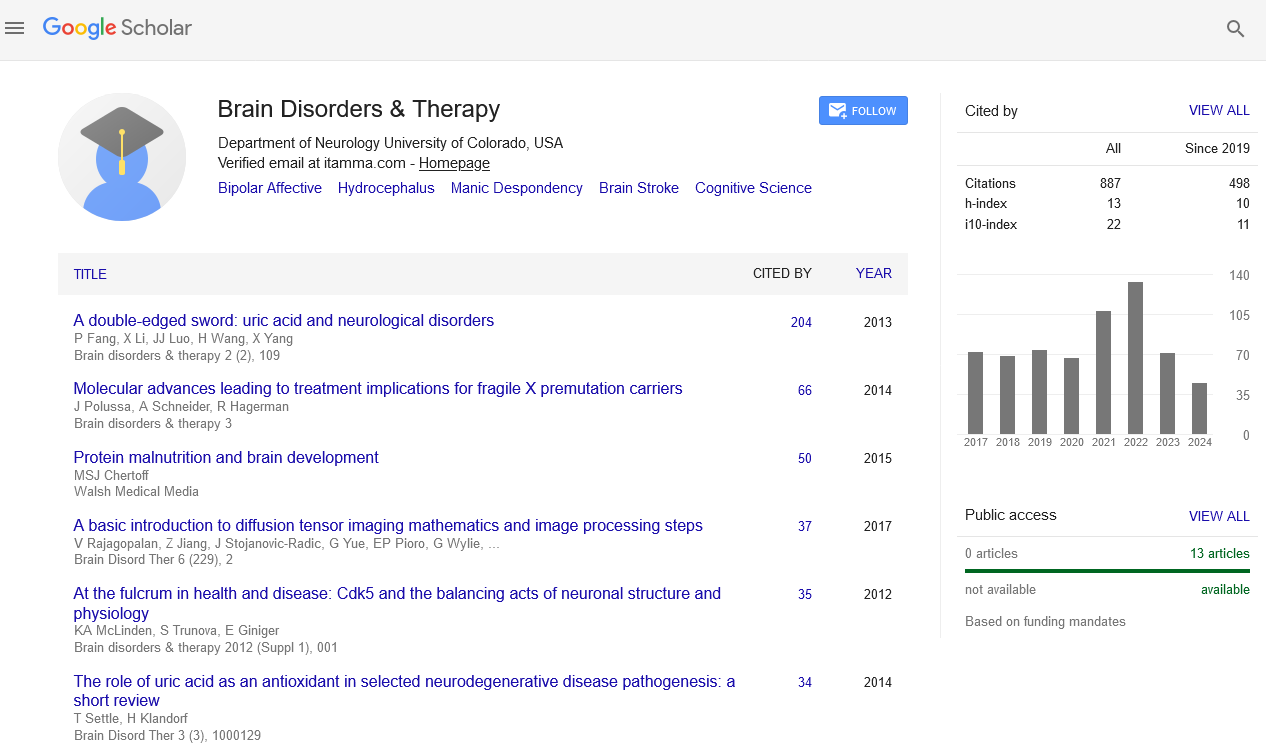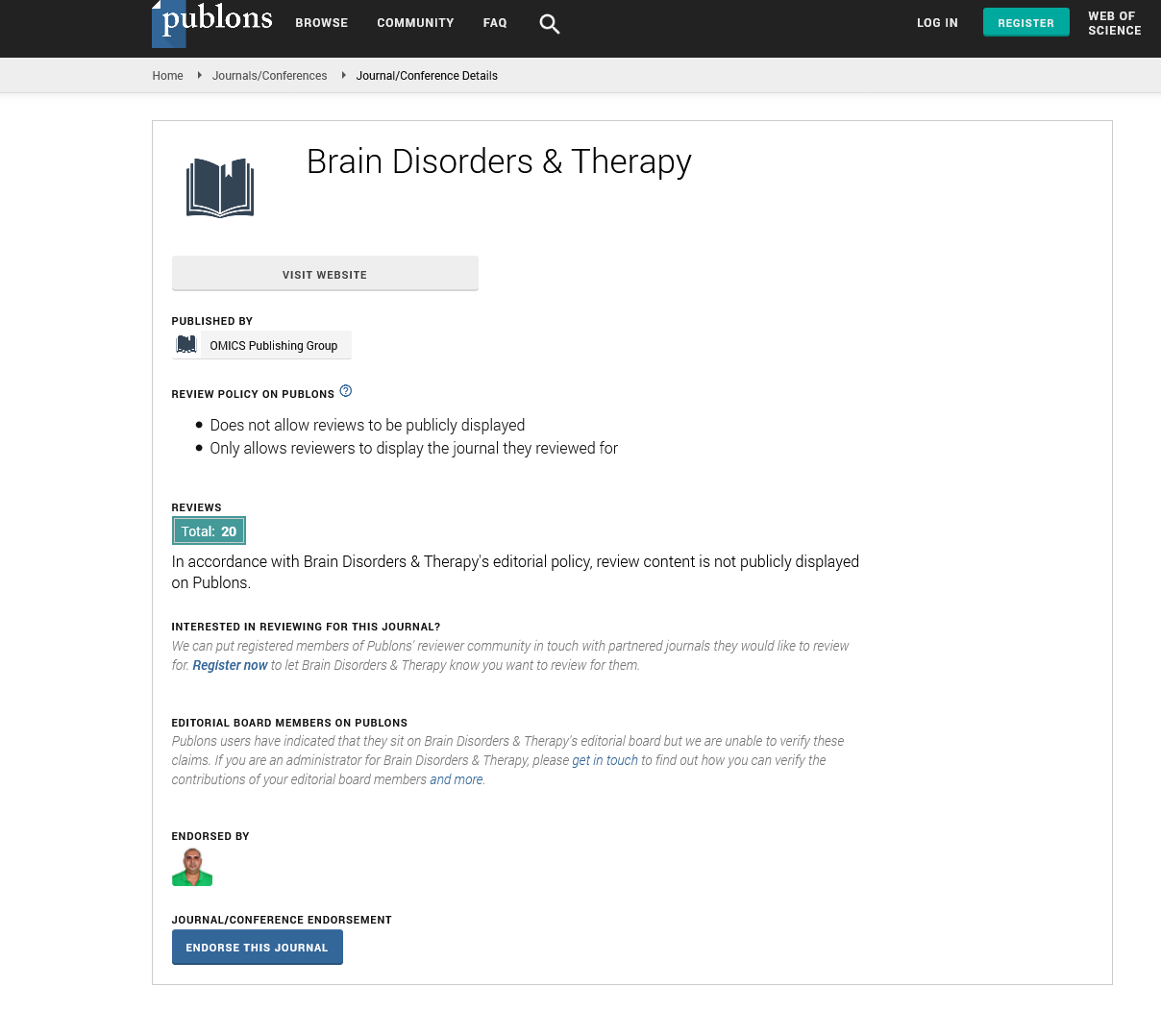PMC/PubMed Indexed Articles
Indexed In
- Open J Gate
- Genamics JournalSeek
- JournalTOCs
- RefSeek
- Hamdard University
- EBSCO A-Z
- OCLC- WorldCat
- Publons
- Geneva Foundation for Medical Education and Research
Useful Links
Share This Page
Journal Flyer

Open Access Journals
- Agri and Aquaculture
- Biochemistry
- Bioinformatics & Systems Biology
- Business & Management
- Chemistry
- Clinical Sciences
- Engineering
- Food & Nutrition
- General Science
- Genetics & Molecular Biology
- Immunology & Microbiology
- Medical Sciences
- Neuroscience & Psychology
- Nursing & Health Care
- Pharmaceutical Sciences
N-acetyl-serotonin and melatonin offer neuroprotection in experimental models of ischemic injury
Global Summit on Stroke
August 03-05, 2015 Birmingham, UK
Xin Wang
Keynote: Brain Disord Ther
Abstract:
The identification of neuroprotective agents for stroke remains elusive. We therefore test whether melatonin receptor 1A agonists
N-acetyl-serotonin (NAS) and melatonin are neuroprotective in experimental models of ischemic injury.
We demonstrate that NAS and melatonin inhibits cell death induced by oxygen-glucose deprivation or H2O2 in primary
cerebrocortical neurons and primary hippocampal neurons in vitro, and/or organotypic hippocampal slice cultures ex vivo. We
further found that NAS and melatonin reduce hypoxia/ischemia injury in the middle cerebral artery occlusion mouse model of
cerebral ischemia in vivo. Our data show that NAS and melatonin are neuroprotective by inhibiting the mitochondrial cell death
pathway including the inhibition of the release of apoptogenic factors cytochrome c, Smac, and apoptosis-inducing factor from
mitochondria to cytoplasm, and activation of caspase-3, -9. Furthermore, pro–IL-1 processing, and activation of caspase -1 are
evaluated in melatonin-mediated neuroprotection. Moreover, we demonstrate that the neuroprotective effects of NAS may result
from the influence of mitochondrial permeability transition pore opening, mitochondrial fragmentation, as well as the suppression
of the autophagic cell death pathway under stress conditions by increasing LC3-II and Beclin-1 levels and decreasing p62 level.
Taken together, we conclude that melatonin receptor 1A agonists NAS and melatonin have the potential as the novel therapies for
ischemic injury.
Biography :
Xin Wang is Director of Neuroapoptosis Drug Discovery Laboratory, Department of Neurosurgery, Brigham and Women’s Hospital/Harvard Medical School. She received
her PhD from Hebrew University of Jerusalem. She did her Postdoctoral training at University of Michigan and Harvard Medical School. She has published about 70 peerreviewed
articles and has served as the Guest Editor, Handling Editor, and Editorial Board Member for a number of peer-reviewed journals, as well as the scientist reviewer
for institutes or foundations including NIH, DOD, BSF, and others, and invited reviewer for 30 peer-reviewed journals.


